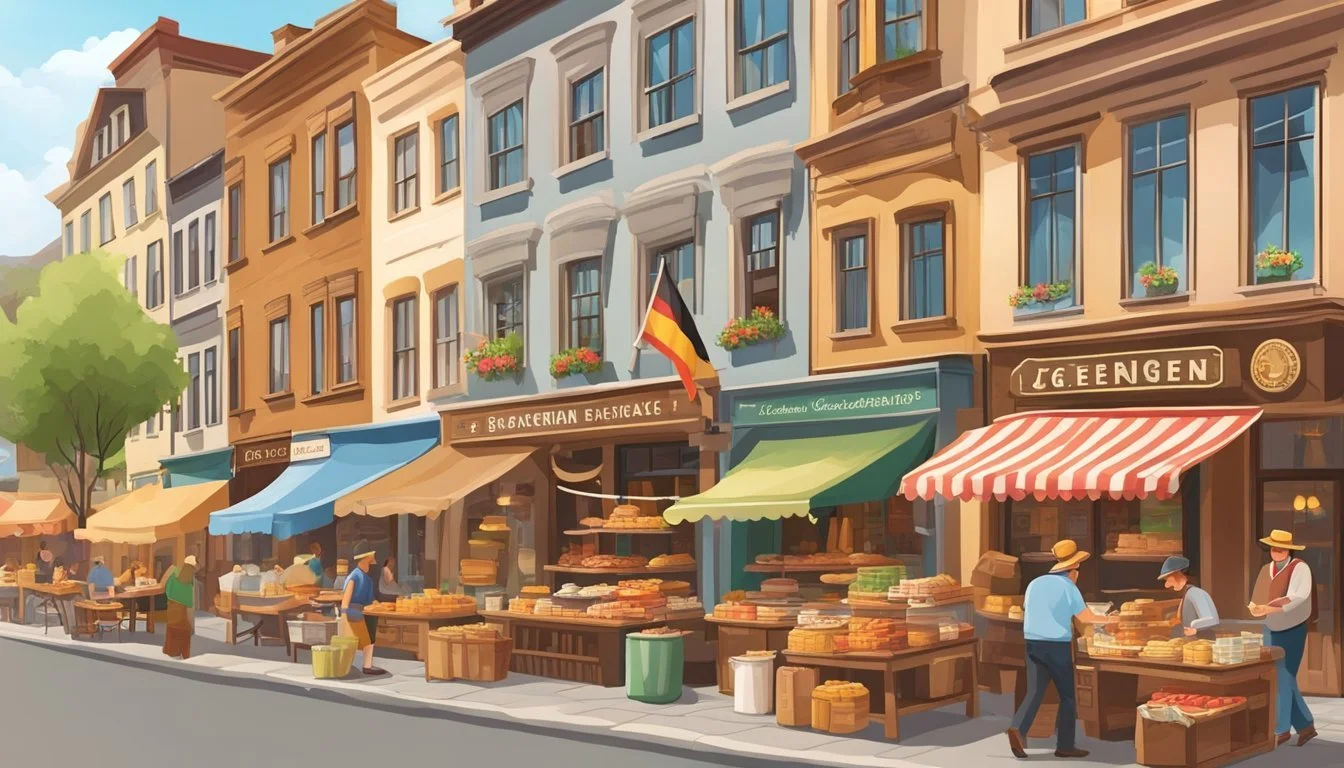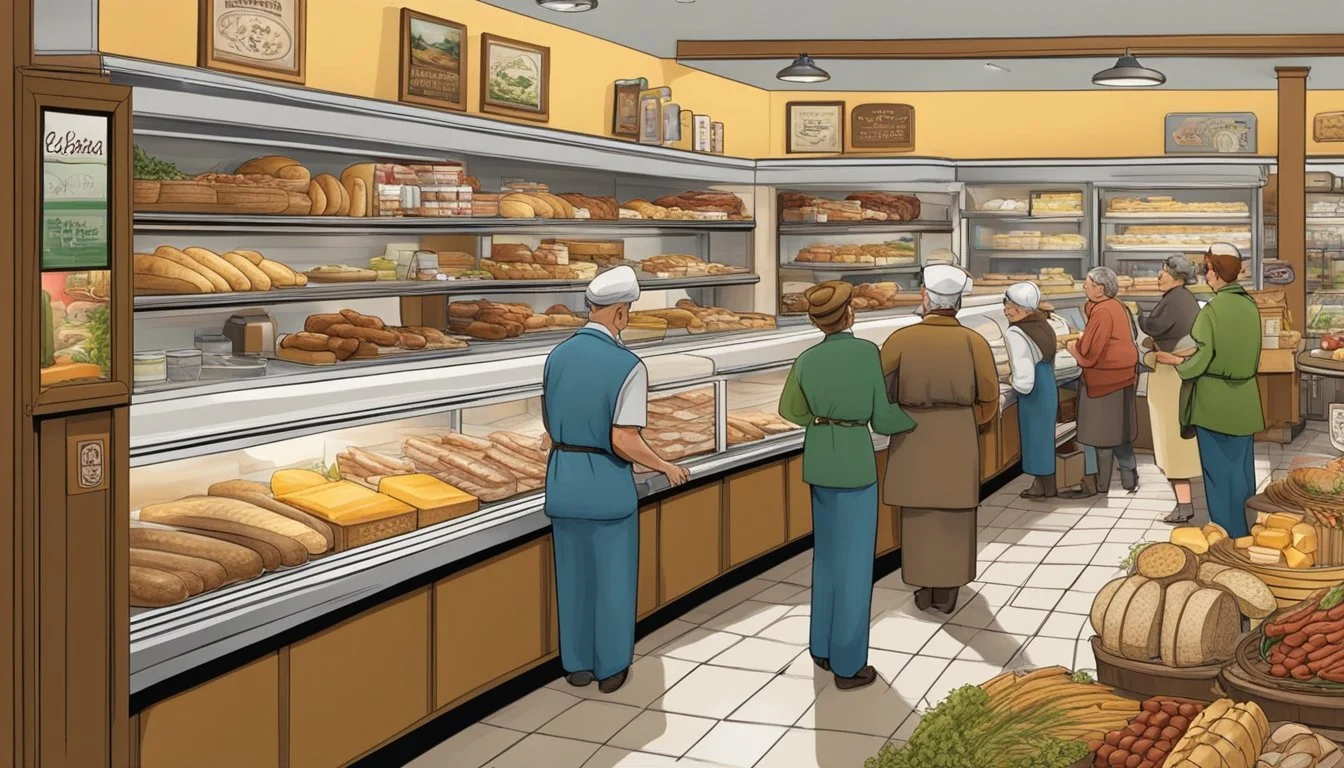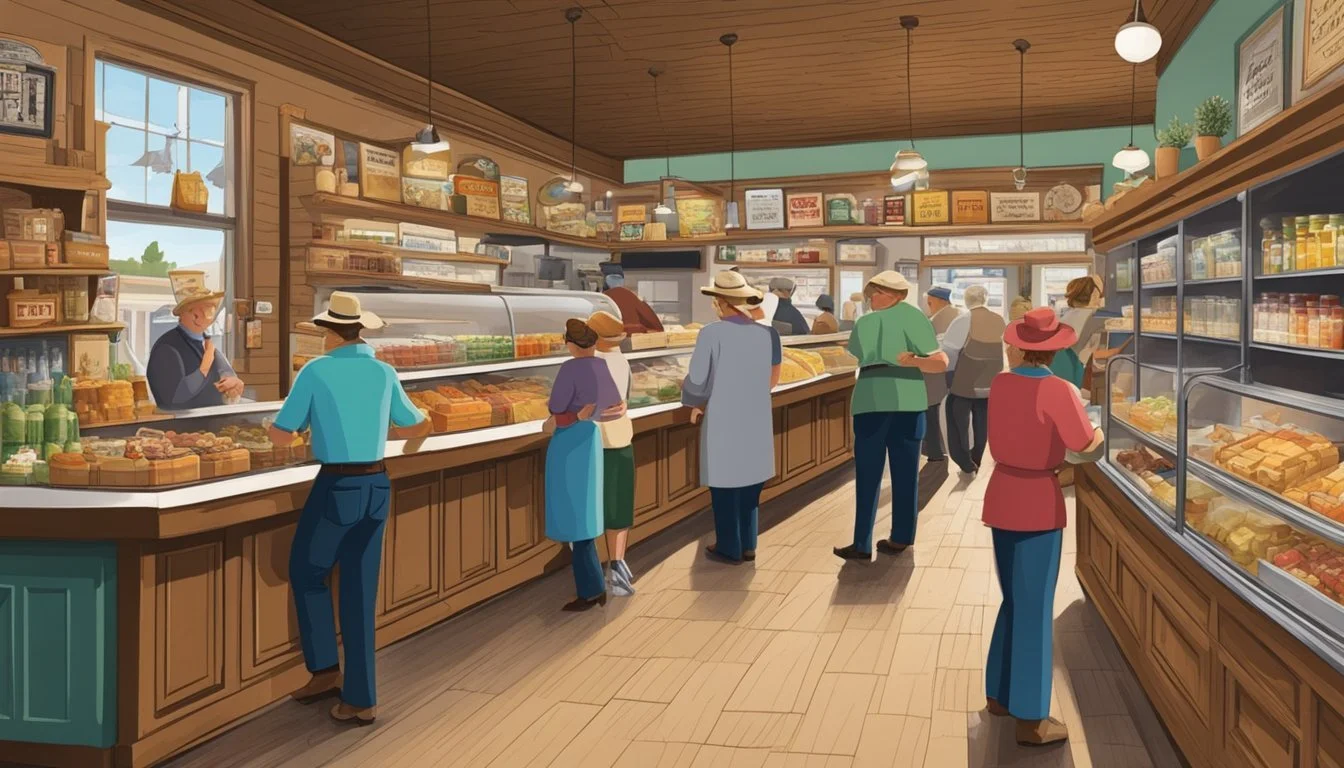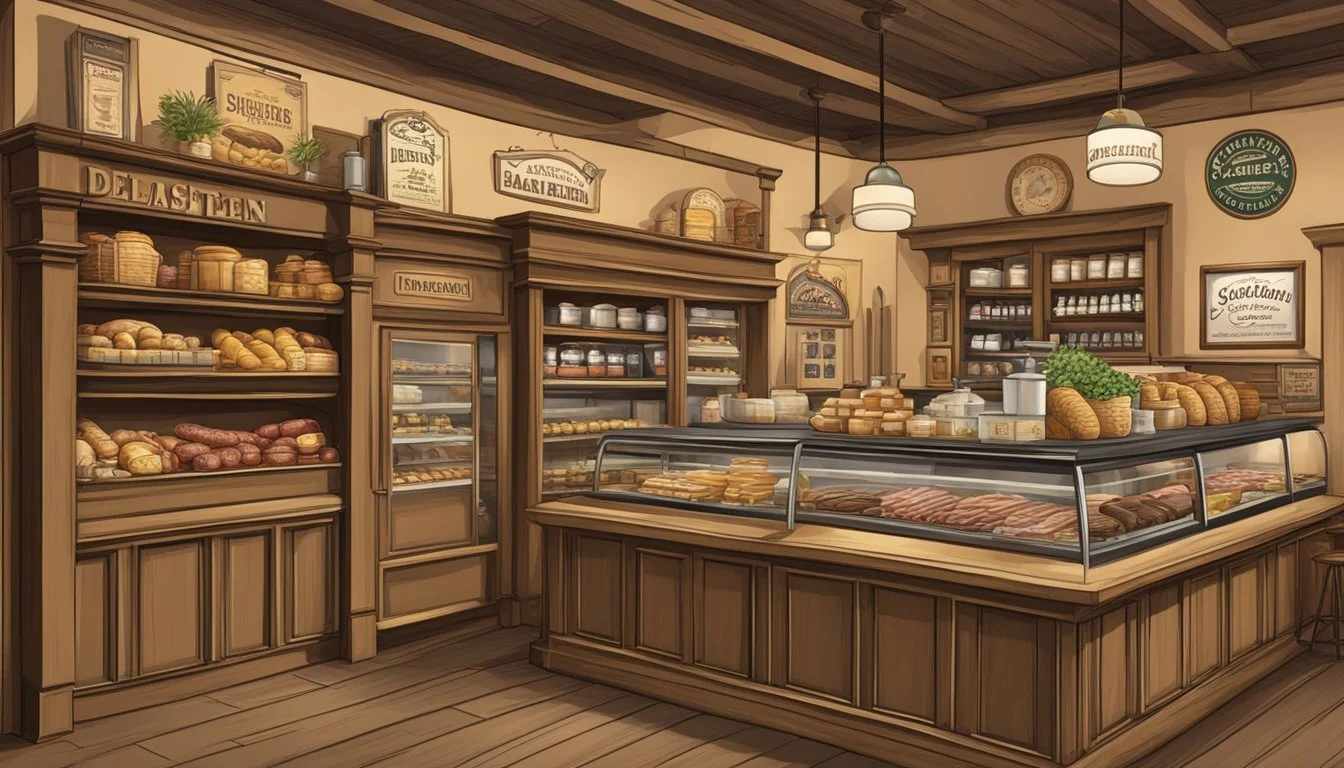The History of German Texan Delicatessens and Specialty Food Shops
A Culinary Legacy
The history of German Texan delicatessens and specialty food shops is a vivid tapestry that intertwines the rich culinary traditions of Germany with the diverse cultural landscape of Texas. When German immigrants settled in Central Texas throughout the 19th century, they brought with them their penchant for savoring and creating high-quality, ready-to-eat foods. This tradition was carried over from German Delikatessen, establishments that were distinctive for their fine foods and gourmet offerings that appealed to those seeking convenience without compromising on taste.
In Texas, these German delicacies carved out a niche, giving rise to a variety of German-inspired restaurants, markets, and delis. These establishments became community fixtures, offering an array of products from authentic sausages to freshly baked breads that echo the old-world flavors. The endurance of such specialty shops is a testament to the state's ability to adopt and celebrate the culinary practices of its immigrant populations.
One can trace the influence of German culture in Texas through the persistence of these food shops and the gastronomic festivities that keep their heritage vibrant. Events such as Wurstfest in New Braunfels are an annual homage to this lasting impact, drawing in crowds to celebrate with traditional sausage, beer, and German customs. Together, they help sustain the legacy of German Texans, ensuring that their food and cultural contributions continue to be an integral part of the state's living history.
Origins of German Influence in Texas
The German influence in Texas began in the 19th century with the arrival of German immigrants, who established distinctive communities, perpetuating their customs and culinary traditions.
German Immigration to Texas
German migrants began arriving in Texas during the 1830s, attracted by land grant opportunities in a region known for its resemblance to the European landscape. By the 1840s, after the Republic of Texas separated from Mexico, the state actively promoted immigration through organizations like the Adelsverein, or the Society for the Protection of German Immigrants in Texas, to populate the area and cultivate the land.
Main Period of Immigration: 1830s-1840s
Attraction Factor: Land grants and ads by the Republic of Texas
Key Organization: Adelsverein (Society for the Protection of German Immigrants in Texas)
Establishing German Texan Communities
The immigrants established their first substantial settlements in central Texas' Hill Country. Towns like New Braunfels and Fredericksburg became centers of German culture, where these Texans maintained their language, traditions, and foodways. They introduced a range of German specialties including sausages, breads, and pastries, which shaped the local culinary scene.
Notable Towns:
New Braunfels: Founded in 1845 by Prince Carl of Solms-Braunfels
Fredericksburg: Founded by the Adelsverein in 1846
These towns became the cornerstones of German heritage in the state, with their influence extending significantly into the local cuisine and community structure. German Texan delis and specialty food shops originated from this deep-rooted German presence, thriving on the culinary customs the immigrants brought with them to Texas.
Development of German Texan Delis
The intertwining of German culinary practices with Texan flavors gave birth to a unique delicatessen culture in Texas. These establishments served as a nexus for German Texans to preserve their traditional foods while adapting to local tastes.
Influence of German Culinary Traditions
German immigrants brought to America a rich food tradition, grounded in meats such as beef, pork, and a variety of sausages. Bread, sauerkraut, and potato dishes, along with condiments like mustard and spices, are staples of the German diet widely incorporated into delis.
In Texas, German influence is apparent in the popularity of smoked and grilled meats. The immigrants adapted their European methods of smoking and curing to Texan ingredients, creating a distinctive German Texan palate that blended the traditional with the local.
Meats: Adaptations of European sausage recipes using Texan beef and pork.
Bread: German-style breads became a common offering.
Condiments: Mustard and spices, integral to German cuisine (What Wine Pairs Perfectly With German Cuisine), were tailored to Texan tastes.
Growth of Delicatessens in Texan Cities
As German Texans settled into American cities, they established delicatessens that became community hubs. These delis were more than just food shops; they were cultural institutions preserving German heritage in a new world.
The growth of delicatessens in cities such as Austin and San Antonio mirrored the expansion of German communities in Texas. They offered a broad spectrum of German-Texan foods, becoming a testament to the successful blending of European immigrant food culture with Texan cuisine.
Austin: The city saw delis serving a mix of German and Texan cuisines, reflecting the diverse demographic.
San Antonio: Delis in these areas became famous for their sauerkraut and sausages, aligning with both Texan and German tastes.
Through these establishments, German culinary traditions deeply embedded themselves in the fabric of Texan food culture.
Cultural Integration and Evolution
As German immigrants settled in Texas, they brought with them rich culinary traditions. Over time, these traditions integrated with local Texan and Southern foods, leading to a unique fusion cuisine. Delicatessens and specialty food shops played a crucial role, adapting German recipes to the tastes and ingredients of the South.
Fusion with Texan and Southern Foods
German settlers brought recipes for smoked meats (What wine goes well with smoked meats?) and delicacies like sausages and cheeses to Texas, where they encountered a robust tradition of barbecue. This resulted in a cross-cultural exchange that birthed the Texas hot gut sausage, a blend of Czech and German influences with Texan barbecue techniques. Similarly, sandwiches in German Texan delis often feature a mix of German and Southern ingredients, such as brisket smoked with German accuracy but flavored with Texan boldness.
Adaptation and Innovation in Deli Offerings
German delicatessens began to innovate, creating food offerings that cater to the diverse palate of Texas. They started incorporating local ingredients and adapting their culinary traditions to the new environment:
Cheeses: German Texan shops started crafting cheeses that could withstand the Southern heat, leading to the development of new, durable varieties.
Recipes: Traditional German recipes were adjusted, often incorporating steak and blacks (black-eyed peas), staples of the Southern diet.
Smoked Meats: Preserving methods were influenced by the regional preferences for smoking and seasoning, fine-tuning the harmony between German culture and Southern methods.
Prominent Foods and Recipes
In Texas's German delicatessens and specialty food shops, a blend of traditional German recipes and Texan influences gives rise to unique and authentic culinary experiences. Deeply rooted in craftsmanship, these establishments offer a variety of meats, baked goods, and dishes that embody the rich cultural fusion.
Specialty Meats and Sausages
These shops often feature a selection of homemade sausages and meats that are staple items in German cuisine. Bratwurst and Knockwurst are common, made from finely ground pork and veal with distinctive spices. Here is a brief list of typical meats one might find:
Bratwurst: A mixture of pork and veal seasoned with ginger, nutmeg, and coriander.
Knockwurst: Typically made from ground pork, beef, and garlic, these sausages have a garlicky flavor and a snappy casing.
Bread, Pastries, and Sweets
Bread and pastry counters are lush with a variety of German-style bread, pastries, and sweets. Customers can find everything from crusty rye bread to delicate strudels. Some highlights include:
Strudel: Layers of thin dough wrapped around fillings such as apples, cherries, or sweet cheeses.
Black Forest Bakery Products: These often include rich chocolate cakes layered with cherries and whipped cream.
Prepared Dishes and Salads
Aside from cold cuts and baked goods, these food establishments often serve a range of prepared dishes and salads that are ready to eat:
Schnitzels: Breaded and fried cutlets of veal or pork.
Sauerkraut: Fermented cabbage that accompanies many German dishes.
Potato Salad: A zesty side commonly prepared with bacon, vinegar, and mustard.
The recipes and foods presented in German Texan delicatessens and specialty food shops reflect a commitment to authenticity and quality, offering a slice of Germany in the heart of Texas.
Social and Economic Impact
German Texan delicatessens and specialty food shops have significantly influenced the local economies and community life, from family-owned operations to grand Oktoberfest celebrations.
Contribution to Local Economies
German Texan delicatessens contribute to local economies through employment, sales revenue, and the support of agriculture in the Hill Country. These family-owned establishments often serve as both retail outlets for German-style sausages and meats and as wholesalers, providing local restaurants with specialty products. For instance, the Fredericksburg area benefits from the economic activities stimulated by these businesses, which align with recommendations from the Texas State Historical Association to preserve and leverage local heritage for economic gains.
Employment: Creating jobs in both retail and supply chain segments.
Agriculture: Supporting local farms that raise livestock in traditional German methods.
Sales Revenue: Generating income through the sale of goods like sausages, beer, and imported groceries.
Role in Community and Celebrations
The role of German Texan delicatessens extends beyond economics into the social fabric of the community, particularly during celebrations. Delicatessens, often at the heart of festivities, offer a taste of heritage through food and drink. They play a pivotal role during events like Oktoberfest, which is modeled after the Munich festival, drawing thousands of visitors. In addition to providing a venue for social gathering and celebration, these delicatessens help maintain and disseminate German-Texan culture.
Oktoberfest: Featured as central hubs, supplying traditional German products for the festivities.
Cultural Preservation: Actively fostering German Texan traditions, supporting the social impact through community engagement and education.
Influence on American Deli Culture
The history and presence of German Texan delicatessens have shaped American deli culture, particularly in the breadth of offerings and the blending of European traditions with local Texan flavors.
Texan Delis and National Recognition
Texan delis have garnered national recognition by incorporating traditional German sausages and baked goods into the broader American palate. For instance, Wurstfest in New Braunfels, Texas, reflects the German Texan heritage and showcases it on a grand scale. The festival elevates the profile of German-style sausages within the American deli space, drawing comparisons to staples like corned beef and pastrami, commonly associated with Jewish delis such as Katz's Deli. While these German Texan delicatessens have not typically been kosher, they align with the Jewish deli focus on quality, tradition, and hearty offerings.
Comparison with Jewish and Italian Delis
Unlike Jewish delis, which are known for kosher offerings, including pickles, corned beef, and pastrami, German Texan delis have developed a distinct yet complimentary tradition. Their emphasis on meats such as bratwurst and knackwurst offers an alternate to delicacies like mortadella and prosciutto found in Italian delis. Meanwhile, Italian delis such as Salumi have contributed to the American deli scene with an array of cured meats (What wine goes well with cured meats?) and sandwiches, providing a contrast to the more focused sausage offerings of German Texan establishments. Both cultures, however, share a commitment to quality and authenticity that continues to influence the expanding American delicatessen landscape.
Key Delicatessen Businesses and Legacies
German Texan delicatessens serve as enduring anchors of culinary heritage, intertwining German tradition with Texan culture. These establishments, both historic and contemporary, reflect a commitment to cultural preservation and family legacy.
Historic and Modern German Texan Delis
New Braunfels stands as a cornerstone of the German-Texan delicatessen legacy, having maintained a rich tapestry of traditional flavors adapted to Texan tastes. Meanwhile, Dallmayr, though not Texan but rather a historic delicatessen in Germany, has influenced the standards of quality for delicatessens worldwide.
Modern delis continue to evolve. Cities like Plano have witnessed a burgeoning growth in specialty food shops, embracing both innovation and tradition within the deli scene.
Table: Historic vs. Modern Delis in Texas
Feature Historic Delis Modern Delis Traditions Deeply rooted in German-Texan heritage Blend of old world and new influences Product Range Conventional German fare Expanded global selections Cultural Impact Preservation of German-Texan culture Dynamic representation of diversity
Legacy of Family-Owned Delis
Family-owned entities like those run by the Beitlich family exemplify resilience and dedication to authenticity. Such delis not only serve food, but also preserve and celebrate their ancestral heritage. The legacy of these delicatessens extends beyond mere sustenance, embodying the spirit of community and continuity.
French influence is also noted in some of the local culinary offerings, manifesting in a unique fusion within these delicatessens. This reflects the adaptability and evolving palate of the Texan market.
Preservation of German Texan Heritage
German-Texan delicatessens and specialty food shops are just the tip of the culinary iceberg when it comes to the preservation of German heritage in Texas. As these establishments delight the palate with traditional flavors, there are concerted efforts within cultural institutions and educational programs to maintain the German Texan legacy.
Museums and Cultural Centers
Hill Country is a testament to the strong German influence in Texas, where cultural centers and museums capture the essence of German Texan heritage. The German Free School in Austin, now the headquarters of the German-Texan Heritage Society, stands as a pivotal preservation site. The structure itself is a significant artifact in its decor— a reflection of 19th-century German architectural style.
Museums, such as the Pioneer Museum in Fredericksburg, display artifacts and exhibits that narrate the life and contributions of German Texans. These venues serve as essential custodians of the rich tapestry that is the German presence in Texas.
Educational Efforts and Historical Research
The German-Texan Heritage Society, as covered by the Texas State Historical Association, is known for its efforts to promote German culture and language. By organizing events like Oktoberfest, and offering language classes, they foster an educational environment where German Texan heritage thrives.
Historical research remains a cornerstone of heritage preservation, with institutions like the Texas State Historical Association and resources like Wikipedia providing valuable data and insight. Bavaria-related celebrations and the use of German decor in delicatessens serve as functional reminders of the cultural heritage and fuel ongoing interest in its preservation.
FAQs and Additional Information
In this section, the reader will find frequently asked questions about German Texan delicatessens and specialty food shops, providing insight into common inquiries and where to obtain more detailed information.
Common Questions About Delis and Their Food
Q: What are some traditional delicacies found in German Texan delicatessens?
A: German Texan delicatessens typically offer a variety of sausages, such as the well-known bratwurst and knackwurst, alongside cured meats, imported cheeses, and traditional pastries.
Q: Can someone recommend a good starter dish for those new to German Texan cuisine?
A: Newcomers might enjoy trying a classic German sausage plate accompanied by sauerkraut and mustard, or a Reuben sandwich with a twist using German-style rye bread.
Q: How do German Texan delis differ from other delicatessens?
A: These delis often incorporate traditional German techniques and recipes passed down through generations, offering an authentic taste of German heritage melded with the local Texan culture.
Resources and References for Further Reading
Books: German Texans by Glen E. Lich offers an in-depth look at the cultural history, while The Sausage Book: The Complete Guide to Making, Cooking & Eating Sausages by Nick Sandler and Johnny Acton provides culinary insights.
Magazines: Regional publications like D Magazine often feature articles about local German Texan eateries and foods.
Organizations: The German Texan Heritage Society maintains archives and resources that can offer additional historical context and recipes.
For those seeking to dive deeper into the history or wanting to recreate the flavors at home, these resources can provide comprehensive information on German Texan culinary traditions.









